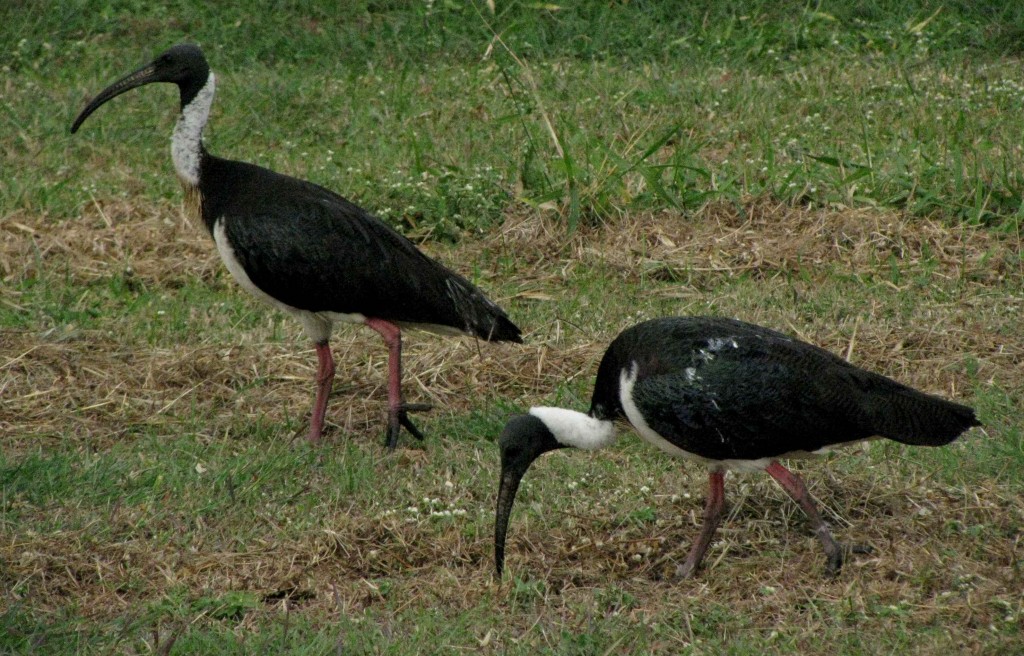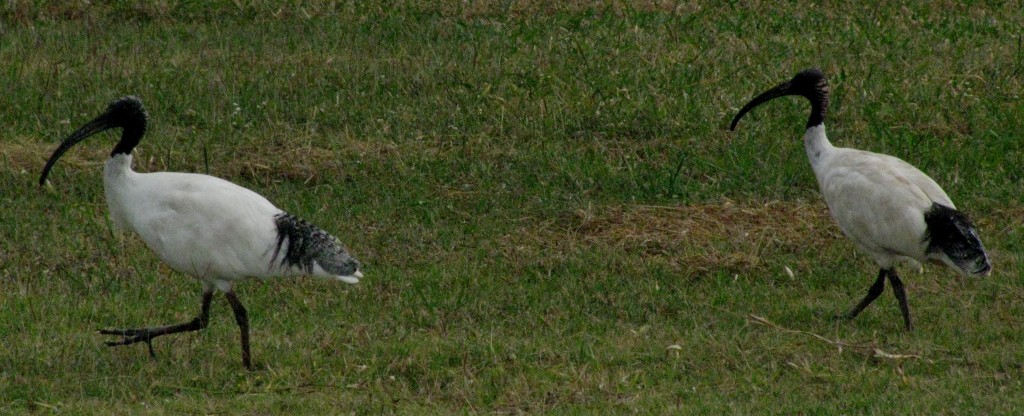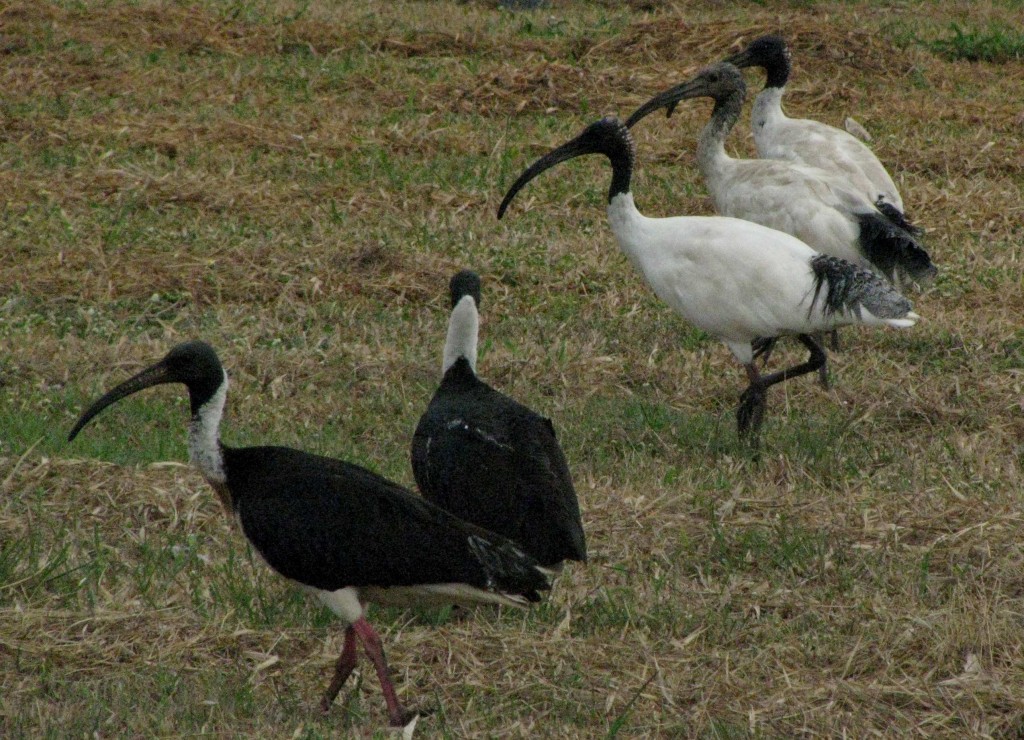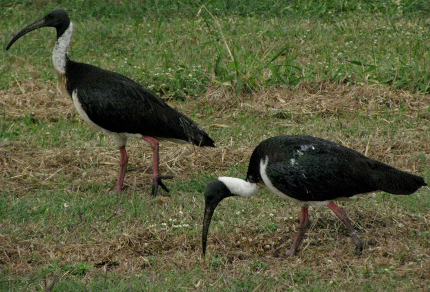
Adult Straw-necked Ibises (© Magi Nams)
This morning, with the sun teasing me into cycling farther and farther into Bicentennial Park, I visited the great bowerbird avenue bower I first found in January and paused twice to photograph ibises. Along with spoonbills, ibises belong to the avian family Threskiornithidae, which includes 31 species worldwide, but only 5 in Australia. Of these, I have so far observed the Australian white ibis, straw-necked ibis, and royal spoonbill, but have yet to spot a yellow-billed spoonbill or glossy ibis, the smallest of the Australian ibises.1
During the Wet, I frequently observed flocks of white ibises – my avian sheep – numbering in the 30’s and up to the 70’s or 80’s feeding on the lawns of Bicentennial Park and the Townsville Golf Course, or in the tidal lagoons of the Ross River. Those numbers have dwindled to solitary birds or groups of 2 to 10 since late March. I’ve spotted straw-necked ibises only a handful of times, only in small numbers, and usually mixed in with flocks of white ibises. After not having seen straw-necked ibises for months in my usual birding grounds of the Ross River Parkway, I’ve noticed several pairs during the past week, either on the golf course or in Bicentennial Park.

Australian White Ibises (© Magi Nams)
All three Australian ibis species have large ranges, being absent only from a broad tongue of land extending from the southern coast of South Australia and Western Australia northward, that area corresponding to arid lands and deserts. These long-legged, predatory birds typically inhabit freshwater wetlands, flooded areas, saline wetlands, wet pastures and lawns, and other open and often wet habitats. They feed by probing for, rooting out, and seizing prey with their distinctive long, curved bills, and feed on frogs and tadpoles, fish, small reptiles, crustaceans, snails, spiders, birds’ eggs, and young, small mammals and birds.2
Although I most commonly observe ibises on the ground, foraging, I have noted pairs, singles, or flocks of white ibises perched in trees next to a waterhole or wetland, or in park and street trees at dusk. In flight, white ibises arrow across the sky with rapid wingbeats, and any vocalizations I’ve heard have been deep, harsh-sounding grunts or squawks.
Breeding adults of both white and straw-necked ibises possess bare black heads, whereas immature birds have feathered heads. The breeding adults also possess long neck plumes, which are straw-coloured in straw-necked ibises – hence, the name. White ibis breeding adults possess black primary feather plumes that drape over their white tails, and a line of brilliant red bare skin on their underwing.3 Recently, I cycled past a white ibis that lifted into flight, exposing that long, red strip of skin. To me, it looked more like a scar than an ornament.

Straw-necked and Australian White Ibises. (© Magi Nams)
Reference:
1. Graham Pizzy and Frank Knight. The Field Guide to the Birds of Australia. 1997. Angus&Robertson, Sydney. pp. 120-123, 525; 2. Ibid, pp. 120, 525; 3. Ibid, pp. 120-121.


